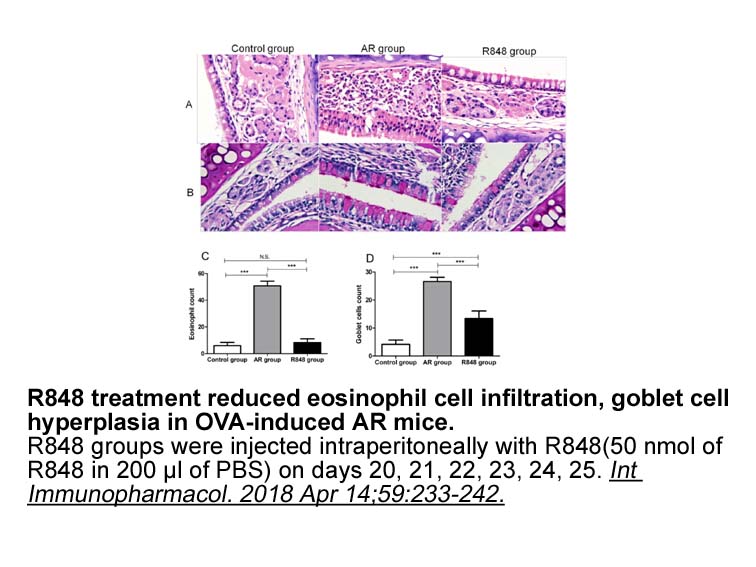Archives
Alternatively procedural factors may have contributed to the
Alternatively, procedural factors may have contributed to the conflicting results. For instance, in order to have a more circumscribed area of drug diffusion, a volume of 0.05μl was injected in experiment 1b, which is four times lower than the one used in the mentioned plus-maze investigation. Besides, for a more precise identification of the injection sites, SB 258719 hydrochloride slices in our experiment were immunostained for the NADPH-diaphorase, which is massively found in the dlPAG, but not in the dmPAG or lPAG, allowing, therefore, a clearer demarcation among these subfields (Carrive and Paxinos, 1994). Finally, in the study of Borelli and Brandao (2008) the effects of CRF in each of the PAG columns were assessed separately and not in the same experimental session as here. This may have compromised data comparison in their study, given well-known fluctuation in baseline activity of control subjects between experiments (Hogg, 1996).
One important finding of the current study is that activation of dPAG CRF2 receptors by urocortin 2 did not interfere with escape expression in the two tests employed, but significantly impaired inhibitory avoidance learning in the elevated T-maze. It should be noted that although the escape threshold of control animals in the in experiment 2b was lower than in the other experiments with the electrical stimulation of dPAG, it is unlike that a floor effect may have masked a pro-escape effect of urocortin 2. It has been shown that the variation in escape threshold (intensity of electrical current after drug injection minus intensity before drug) may assume values below zero, as observed, for instance, after bicuculline administration in the dPAG (Casarotto et al., 2010).
Evidence from both pharmacological and knockdown studies corroborates with the anxiolytic effect found here after CRF2 receptor activation. For instance, it has been shown that CRF2 receptor deficient mice are hypersensitive to stress and exhibit enhanced anxious behavior (Bale et al., 2000, Kishimoto et al., 2000). Intracerobroventricular injection of urocortin 3, a highly selective CRF2 receptor agonist, increases open-arms exploration in rats exposed to the elevated plus-maze (Valdez et al., 2003). Results such as these have led to the proposal that CRF1 and CRF2 receptors play opposing roles in anxiety regulation (Bale, 2005) and that the former ligand site may facilitate recovery of stress response, acting to inhibit initial CRF1-induced aversive consequences (Reul and Holsboer, 2002, Risbrough and Stein, 2006). However, other evidence in the literature indicates that this may be a simplistic model, and many factors such as drug dose, brain location, time, stress basal level and type of behavior measured may influence the direction of CRF2-evoked effects (Henry et al., 2006, Risbrough and Stein, 2006). This seems to be the case here where an opposing influence of CRF1 and CRF2 r eceptors was evidenced on avoidance, but not escape regulation. Such a sort of mismatch has been also seen for CRF1 and CRF2 receptor influence on the magnitude and plasticity of defensive startle response in mice. Thus, Risbrough et al. (2004) showed that whereas the two CRF receptors act in concert to increase startle reactivity, they work in opposition to regulate the flexibility of startle, measured by inhibition of startle by sensory stimuli (i.e. prepulse inhibition). Therefore, while the role played by CRF1 receptors in enhancing defensiveness has been widely acknowledged, the influence of CRF2 in this process seems to be more complex (for a recent review, see Janssen and Kozicz, 2013).
eceptors was evidenced on avoidance, but not escape regulation. Such a sort of mismatch has been also seen for CRF1 and CRF2 receptor influence on the magnitude and plasticity of defensive startle response in mice. Thus, Risbrough et al. (2004) showed that whereas the two CRF receptors act in concert to increase startle reactivity, they work in opposition to regulate the flexibility of startle, measured by inhibition of startle by sensory stimuli (i.e. prepulse inhibition). Therefore, while the role played by CRF1 receptors in enhancing defensiveness has been widely acknowledged, the influence of CRF2 in this process seems to be more complex (for a recent review, see Janssen and Kozicz, 2013).